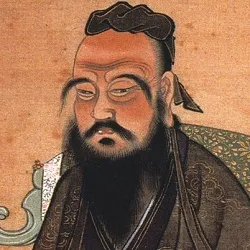- RESEARCHDistance Learning at AIU is enhanced by vast academic resources and innovative technologies build into the Virtual Campus: Hundreds of self-paced courses with video lectures and step by step lessons, thousands of optional assignments, 140,000 e-books, the Social Media & Networking platform allowing collaboration/chat/communications between students, and MYAIU develop students holistically in 11 areas beyond just academics.
- PROGRAMS OFFERED
- Areas of Study
- Courses and Curriculum
- Open Courses
- Register for a Program
- Associate Program
- Associate in Addiction Counseling
- Associate in Agriculture Food And Resources
- Associate in Anti Terrorism Security
- Associate in Behavior Analysis In Special Education
- Associate in Bioethics
- Associate in Climatology
- Associate in Cultural Theological Communication
- Associate in Culinary Arts
- Associate in Ecotechnology
- View all Associates Programs
- Bachelor Program
- Bachelors in Community Development
- Bachelors in Environmental Science
- Bachelor in Education (B.Ed, BS)
- Bachelors in Economics
- Bachelors in Entrepreneurship
- Bachelors in Financial Administration
- Bachelors in Human Resource Management
- Bachelors in Linguistics
- Bachelors in Nutritional Science
- Bachelors in Occupational Health and Safety
- Bachelors in Psychology
- View all Bachelor Programs
- Doctorate Program
- Doctor | of Biology (PhD)
- Doctorate in Business Administration (DBA, PhD)
- Doctor of Economics (PhD)
- Doctor of Electrical Engineering (D.Sc, PhD)
- Doctor of Finance (PhD)
- Doctorate in International Relations
- Doctorate in Information Technology (D.Sc)
- Doctor of Legal Studies (PhD)
- Doctor of Project Management (PhD)
- Doctor of Sociology (PhD, D.Sc)
- Doctorate in Sustainable Natural Resources Management
- View all Doctorate Programs
- Master Program
- Postdoctoral Program
- Postdoctoral in Animal Science
- Postdoctoral in Anti Terrorism Security
- Postdoctoral in Behavior Analysis In Special Education
- Postdoctoral in Bioethics
- Postdoctoral in Blockchain Technology and Digital Currency
- Postdoctoral in Business Management
- Postdoctoral in Cloud Computing
- Postdoctoral in Computer Engineering
- View all Postdoctoral Programs
AIU offers a wide range of majors in areas including the Arts, Business, Science, Technology, Social, and Human studies. More than 120 degrees and programs are available for adult learners at the associate’s, bachelor’s, master’s, doctoral and postdoctoral level. - VIRTUAL CAMPUS
Distance Learning at AIU is enhanced by vast academic resources and innovative technologies build into the Virtual Campus: Hundreds of self-paced courses with video lectures and step by step lessons, thousands of optional assignments, 140,000 e-books, the Social Media & Networking platform allowing collaboration/chat/communications between students, and MYAIU develop students holistically in 11 areas beyond just academics.
- ALUMNI
The world is YOUR campus!”, that is the message of AIU’s month magazine Campus Mundi. Hear the voices and see the faces that make up AIU. Campus Mundi brings the world of AIU to you every months with inspirational stories, news and achievements by AIU members from around the world (students and staff are located in over 200 countries).
- RESEARCHDistance Learning at AIU is enhanced by vast academic resources and innovative technologies build into the Virtual Campus: Hundreds of self-paced courses with video lectures and step by step lessons, thousands of optional assignments, 140,000 e-books, the Social Media & Networking platform allowing collaboration/chat/communications between students, and MYAIU develop students holistically in 11 areas beyond just academics.
- PROGRAMS OFFERED
- Areas of Study
- Courses and Curriculum
- Open Courses
- Register for a Program
- Associate Program
- Associate in Addiction Counseling
- Associate in Agriculture Food And Resources
- Associate in Anti Terrorism Security
- Associate in Behavior Analysis In Special Education
- Associate in Bioethics
- Associate in Climatology
- Associate in Cultural Theological Communication
- Associate in Culinary Arts
- Associate in Ecotechnology
- View all Associates Programs
- Bachelor Program
- Bachelors in Community Development
- Bachelors in Environmental Science
- Bachelor in Education (B.Ed, BS)
- Bachelors in Economics
- Bachelors in Entrepreneurship
- Bachelors in Financial Administration
- Bachelors in Human Resource Management
- Bachelors in Linguistics
- Bachelors in Nutritional Science
- Bachelors in Occupational Health and Safety
- Bachelors in Psychology
- View all Bachelor Programs
- Doctorate Program
- Doctor | of Biology (PhD)
- Doctorate in Business Administration (DBA, PhD)
- Doctor of Economics (PhD)
- Doctor of Electrical Engineering (D.Sc, PhD)
- Doctor of Finance (PhD)
- Doctorate in International Relations
- Doctorate in Information Technology (D.Sc)
- Doctor of Legal Studies (PhD)
- Doctor of Project Management (PhD)
- Doctor of Sociology (PhD, D.Sc)
- Doctorate in Sustainable Natural Resources Management
- View all Doctorate Programs
- Master Program
- Postdoctoral Program
- Postdoctoral in Animal Science
- Postdoctoral in Anti Terrorism Security
- Postdoctoral in Behavior Analysis In Special Education
- Postdoctoral in Bioethics
- Postdoctoral in Blockchain Technology and Digital Currency
- Postdoctoral in Business Management
- Postdoctoral in Cloud Computing
- Postdoctoral in Computer Engineering
- View all Postdoctoral Programs
AIU offers a wide range of majors in areas including the Arts, Business, Science, Technology, Social, and Human studies. More than 120 degrees and programs are available for adult learners at the associate’s, bachelor’s, master’s, doctoral and postdoctoral level. - VIRTUAL CAMPUS
Distance Learning at AIU is enhanced by vast academic resources and innovative technologies build into the Virtual Campus: Hundreds of self-paced courses with video lectures and step by step lessons, thousands of optional assignments, 140,000 e-books, the Social Media & Networking platform allowing collaboration/chat/communications between students, and MYAIU develop students holistically in 11 areas beyond just academics.
- ALUMNI
The world is YOUR campus!”, that is the message of AIU’s month magazine Campus Mundi. Hear the voices and see the faces that make up AIU. Campus Mundi brings the world of AIU to you every months with inspirational stories, news and achievements by AIU members from around the world (students and staff are located in over 200 countries).
Breakthroughs in Parkinson’s Disease Research: A Hope for the Future

What are the key challenges in treating Parkinson’s disease, and how do they impact the development of effective treatments?
How do innovative therapies, such as GeneCode’s GDNF mimetic, address the limitations of current treatments for Parkinson’s disease?
What role do global collaboration and investment play in accelerating breakthroughs in Parkinson’s disease research?
Using the questions provided, craft an essay that explores the breakthroughs in Parkinson’s disease research and their potential to transform lives. Highlight the human impact of the disease, the scientific challenges in treatment, and the promising developments discussed. Support your essay with examples like GeneCode’s innovative approach and the role of collaboration in driving progress. Organize your essay into a clear introduction, body paragraphs addressing each question, and a compelling conclusion that reflects hope for the future.
(Login to your student section to access the AIU Additional Resources Library.)
Breakthroughs in Parkinson’s Disease Research: A Hope for the Future
Parkinson’s disease (PD), a progressive neurodegenerative disorder, is on a worrying rise worldwide. According to the World Health Organization (WHO), its prevalence has doubled since the year 2000. In 2019 alone, the disease claimed 329,000 lives, marking a 100% increase in deaths over two decades. This stark increase reflects both the growing number of aging populations globally and the role of genetic predispositions that elevate risk. The statistics paint a concerning picture, underscoring the urgent need for innovative and effective treatments.
As the burden of Parkinson’s intensifies, researchers around the globe are redoubling efforts to understand and combat this disease. Advances in medical technology and molecular biology are shedding new light on the mechanisms of PD, offering hope for breakthroughs that could transform the lives of millions. These promising developments signal a potential turning point in the fight against this debilitating condition.
The Human Toll of Parkinson’s Disease
Parkinson’s is more than a medical condition; it is a profound human struggle. Symptoms such as tremors, muscle stiffness, and impaired movement severely impact quality of life. Beyond physical symptoms, patients may endure insomnia, mood swings, cognitive decline, and dementia. The disease often isolates individuals from their loved ones, as exemplified by the story of Mart Saarma, a neurobiologist at the University of Helsinki, whose uncle’s battle with PD profoundly affected him. Saarma’s experience underscores the urgent need for better treatments and understanding.

Challenges in Treating Parkinson’s Disease
A Complex Brain and Limited Repair Mechanisms
Parkinson’s disease (PD), a progressive neurodegenerative disorder, is on a worrying rise worldwide. According to the World Health Organization (WHO), its prevalence has doubled since the year 2000. In 2019 alone, the disease claimed 329,000 lives, marking a 100% increase in deaths over two decades. This stark increase reflects both the growing number of aging populations globally and the role of genetic predispositions that elevate risk. The statistics paint a concerning picture, underscoring the urgent need for innovative and effective treatments.
As the burden of Parkinson’s intensifies, researchers around the globe are redoubling efforts to understand and combat this disease. Advances in medical technology and molecular biology are shedding new light on the mechanisms of PD, offering hope for breakthroughs that could transform the lives of millions. These promising developments signal a potential turning point in the fight against this debilitating condition.
The human brain, with its 100 billion neurons, is extraordinarily complex. Unlike other cells in the body, neurons do not regenerate, making them particularly vulnerable to damage. In Parkinson’s, the substantia nigra—a brain region vital for dopamine production—is the primary site of neuron loss. Dopamine, often called the “conductor” of the body’s functions, regulates movement, mood, and more. As neurons die, dopamine levels plummet, disrupting harmony across various bodily functions. This disruption manifests as the hallmark symptoms of Parkinson’s disease, including tremors, rigidity, and bradykinesia (slowness of movement). Beyond these physical impairments, the loss of dopamine has cascading effects on mood regulation, cognitive abilities, and overall vitality, further compounding the challenges faced by patients.
Current Treatments and Their Limitations
Levodopa remains the most widely used treatment for alleviating the symptoms of Parkinson’s disease by replenishing dopamine levels in the brain. While highly effective in managing motor symptoms temporarily, it does not address the underlying cause of the disease, nor does it prevent the progression of neuron degeneration. This limitation underscores the need for treatments that go beyond symptomatic relief.
Emerging therapeutic approaches, such as neurotrophic factors like Glial Cell Line-Derived Neurotrophic Factor (GDNF) proteins, offer hope for regenerating damaged neurons and potentially reversing some effects of the disease. However, these approaches face significant challenges, including the blood-brain barrier—a natural defense mechanism that restricts the delivery of large therapeutic molecules to their intended targets in the brain. Overcoming this barrier remains a critical focus in the development of more effective Parkinson’s disease treatments.

A Promising New Frontier: GeneCode’s Breakthrough
Innovation in Drug Development
GeneCode, a pharmaceutical company where Mart Saarma serves as Chief Science Officer, is at the forefront of developing a revolutionary drug for Parkinson’s. Their approach centers on a “GDNF mimetic,” a small molecule designed to replicate the neuroprotective effects of GDNF proteins. Unlike traditional treatments, this drug aims to protect neurons from further damage while promoting regeneration.
Advantages of the GDNF Mimetic
- Blood-Brain Barrier Compatibility: With a molecular weight of approximately 500 daltons, the mimetic can easily cross the blood-brain barrier, unlike larger GDNF proteins.
- Early-Stage Treatment: The drug’s accessibility means it could potentially be administered during the early stages of the disease, preserving more neurons and maintaining a higher quality of life.
- Global Accessibility: The production and distribution of small molecules are cost-effective, making this treatment accessible to a broader population.
Preliminary Success and Ongoing Efforts
Early experiments have demonstrated the drug’s ability to protect dopamine neurons, stimulate axon growth, and regenerate synaptic connections. These results are an encouraging step toward the ultimate goal of halting Parkinson’s progression. However, the road to human trials remains arduous. Animal testing and toxicology studies are currently underway to ensure the drug’s safety and efficacy.
Collaboration and Optimism in Research
Levodopa remains the most widely used treatment for alleviating the symptoms of Parkinson’s disease by replenishing dopamine levels in the brain. While highly effective in managing motor symptoms temporarily, it does not address the underlying cause of the disease, nor does it prevent the progression of neuron degeneration. This limitation underscores the need for treatments that go beyond symptomatic relief.
Emerging therapeutic approaches, such as neurotrophic factors like Glial Cell Line-Derived Neurotrophic Factor (GDNF) proteins, offer hope for regenerating damaged neurons and potentially reversing some effects of the disease. However, these approaches face significant challenges, including the blood-brain barrier—a natural defense mechanism that restricts the delivery of large therapeutic molecules to their intended targets in the brain. Overcoming this barrier remains a critical focus in the development of more effective Parkinson’s disease treatments.
The Path Ahead
While challenges remain, the future holds immense promise. As Saarma aptly notes, “The field is endless, but my life is limited, as are all of ours. But you do what you can with your time.” His relentless pursuit, along with the dedication of countless researchers, offers hope for a fundamental shift in the treatment of neurodegenerative diseases. With sustained investment, innovative research, and global collaboration, the dream of breakthroughs that bring relief and renewal to millions batRtling Parkinson’s may soon become a reality.

If you’re inspired by advancements in science and healthcare and wish to stay updated with resources that delve into these transformative efforts, join AIU. Gain access to a wealth of knowledge and connect with a community passionate about driving change.
Join us today to explore more insights and stories that shape our understanding of complex diseases and their solutions.
Pioneering Advancements in Science, Fueling Human Evolution and Leaving a Lasting Legacy
Nanotechnology in Drug Delivery and Disease Treatment
Nanotechnology in Drug Delivery Systems
Understanding Vitamin and Mineral Deficiency
References
Parkinson’s Disease: Challenges, Progress, and Promise
Parkinson’s Disease: 5 Reasons for Hope
New hopes for disease modification in Parkinson’s Disease
Reminder to our Dear Students,
Please ensure you are logged in as a student on the AIU platform and logged into the AIU Online
Library before accessing course links. This step is crucial for uninterrupted access to your learning
resources.
AIU Success Stories







Contact Us Today!
Begin Your Journey!
AIU’s Summer of Innovation and Growth gives you the ability to earn up to $5000 in tuition credit by completing free lessons and courses.
Whether you’re looking to acquire new skills, advance your career, or simply explore new interests, AIU is your gateway to a world of opportunities. With free access to 3400 lessons and hundreds of courses the ability to earn credits and earn certificates there’s no better time to start learning.
Join us today as a Guest Student and take the first step towards a brighter, more empowered future.
Explore. Learn. Achieve.

Contact Us
Atlantic International University
900 Fort Street Mall 905 Honolulu, HI 96813 info@aiu.edu
Quick Links
Home | Online Courses | Available Courses | Virtual Campus | Career Center | Available Positions | Ask Career Coach | The Job Interview | Resume Writing | Accreditation | Areas of Study | Bachelor Degree Programs | Masters Degree Programs | Doctoral Degree Programs | Course & Curriculum | Human Rights | Online Library | Representations | Student Publication | Sponsors | General Information | Mission & Vision | School of Business and Economics | School of Science and Engineering | School of Social and Human Studies | Media Center | Admission Requirements | Apply Online | Tuition | Faculty & Staff | Distance Learning Overview | Student Testimonials | AIU Blogs | Register for Program | Privacy Policy | FAQ



















